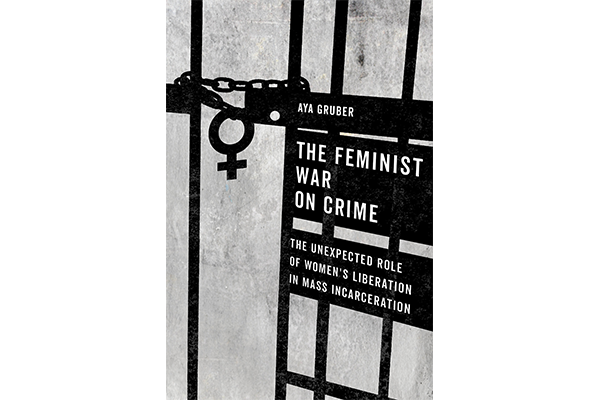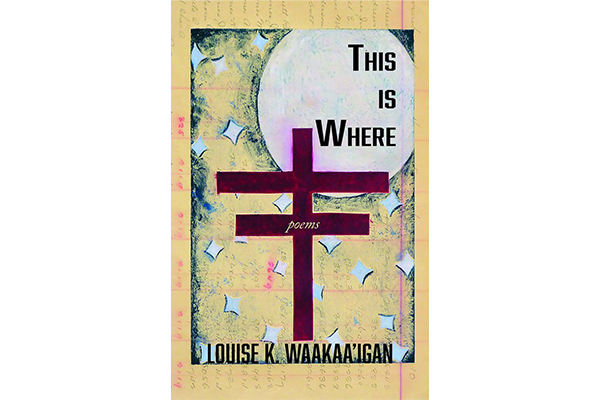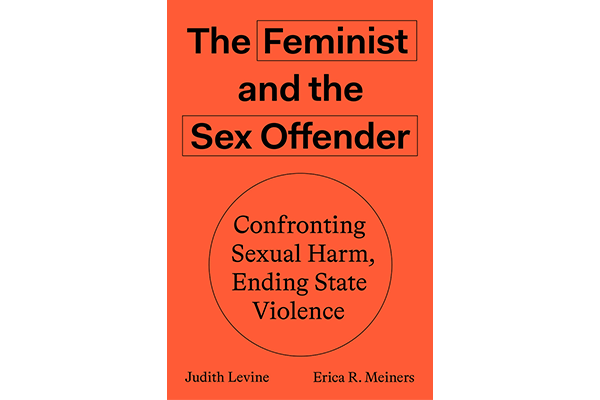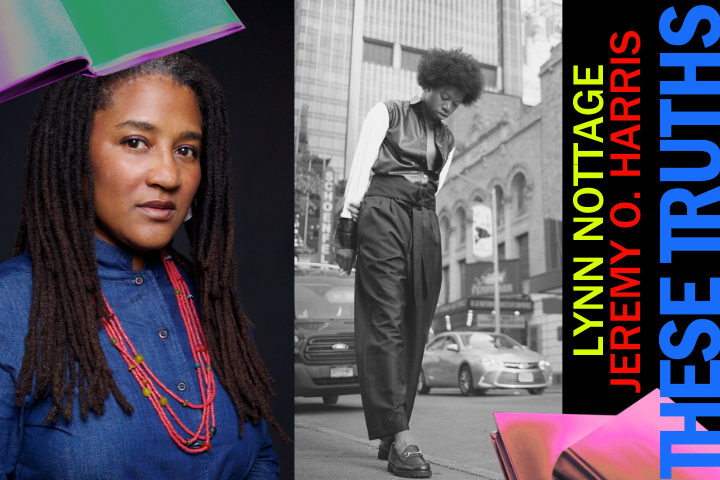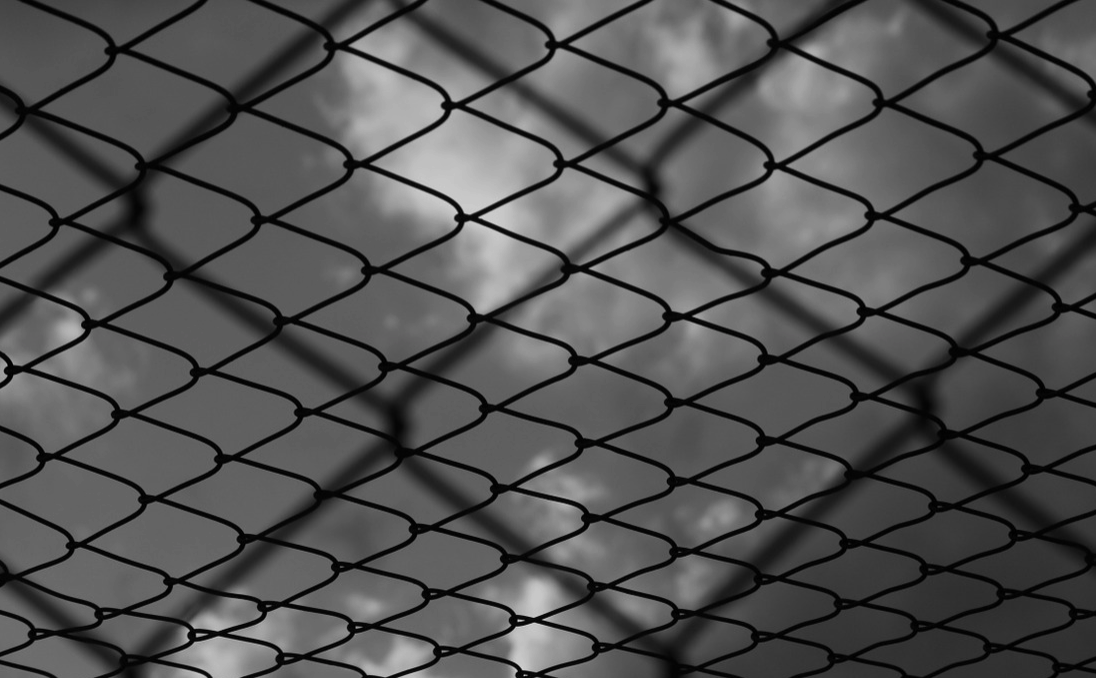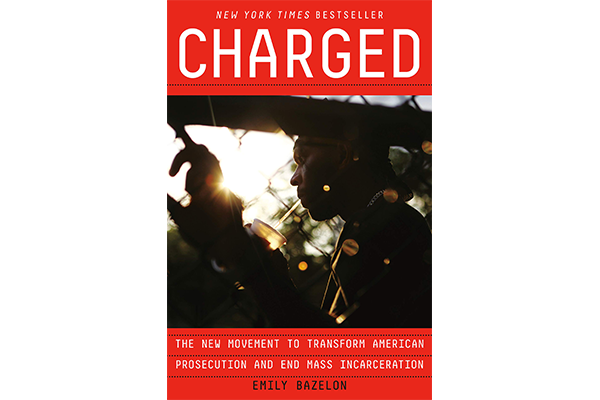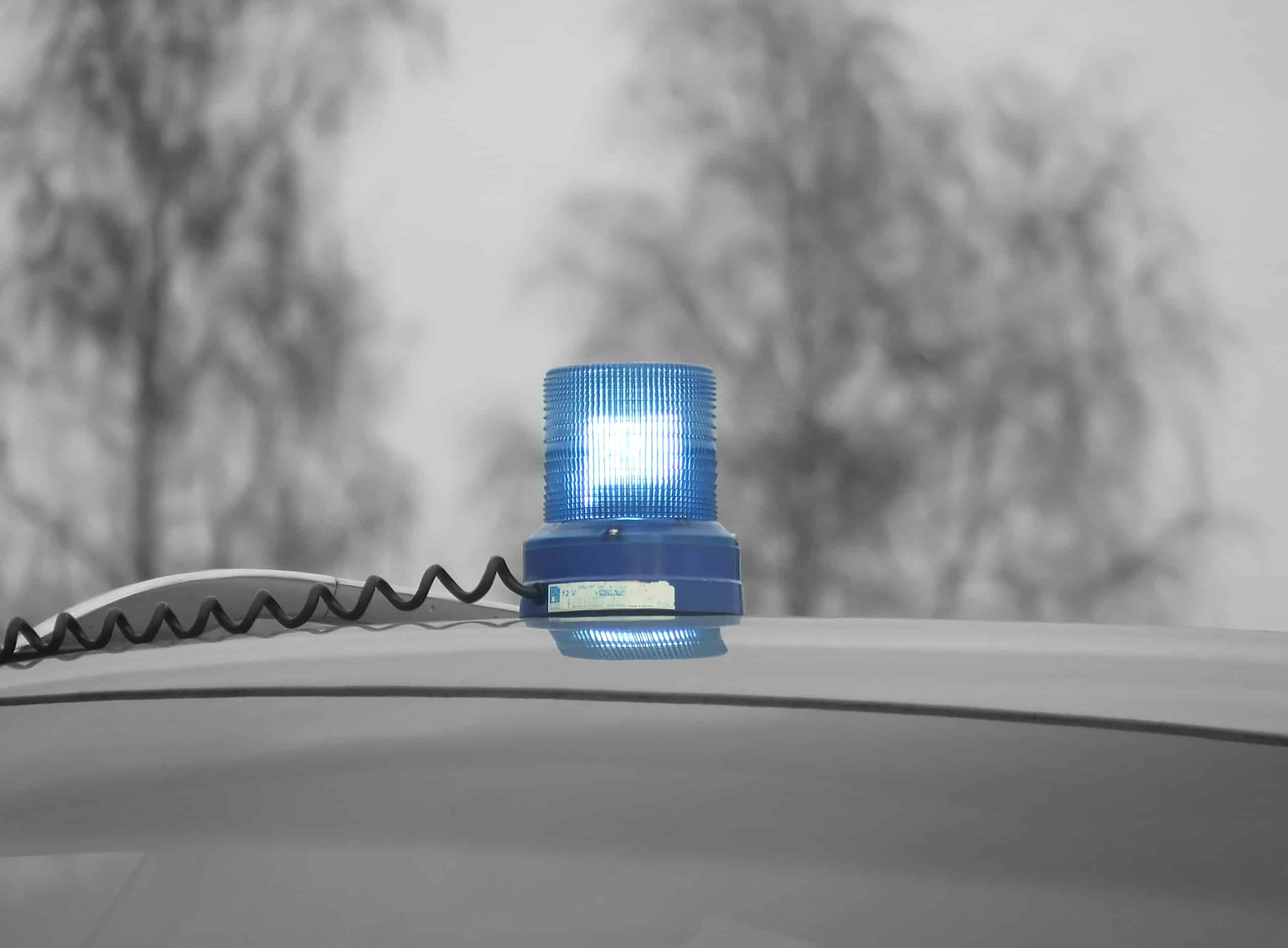TRANSCRIPT
NICOLETTE NATALE: Hi Alejo, thank you for joining us today.
ALEJO RODRIGUEZ: Hi, how are you doing, Nicolette? Glad to be here.
NATALE: I was just wondering if before we begin, if you could tell us a little bit about yourself and how your experiences have shaped the work that you do at Exodus Transitional Community.
RODRIGUEZ: Okay. So my name is Alejo Rodriguez. I’m currently the arts and civic engagement coordinator at Exodus Transitional Community, which is a reentry service provider for individuals coming home, via Rikers Island, upstate New York, and we also just provide general services for individuals who had contact with the criminal justice system.
Our founder actually did time and went through reentry himself in the mid-to-late ’90s and was really moved and felt that it could be done a different way or have a different approach or strategy. It was coming from people who were directly impacted themselves. So today, I think the staff is approaching 50 people. I think 90 percent of our staff is formerly impacted by the criminal justice system in one way or the other and/or family members and directly, including myself. So I came home in 2017, after serving 32 years in prison for a felony murder charge, was denied parole. I had actually had an 18-year-to-life sentence, and I was battling parole for approximately 14 years.
During that time, prior to even making my parole board, I had taken advantage while colleges were still available in prisons. Ended up, you know, coming in, coming there as a pretty much an unskilled high school graduate, right? Came to prison in 1985; by 2003, I had acquired a master’s degree from New York Theological Seminary, had been published by PEN America in the work of Doing Time: 25 years of PEN Prison Writing Awards, won several other awards since then, as well as just being published for my poems in other literary works. I’ve most recently got published last year for an article called “The Obscure Legacy of Mass Incarceration.”
So I’ve really been trying to be a part of this work, utilizing my own personal experience—but also learning from it too, as well. And trying to help push the needle to create more justice and equity in the systems that tend to not really hear the voices of the people and really actually in my opinion, help to perpetuate [criminality]. If the concern is public safety, you try to move people away from criminality, that the indirect discrimination—indirect, not really hearing people with their concerns doesn’t really—I did say indirect discrimination, but discrimination is very direct, right? But indirect—not hearing people, institutional discrimination—actually perpetuates, in my opinion, criminality and causes or can cause people to act in other ways than we would want in society.
NATALE: Yeah, I actually had a question stemming from the piece that you just alluded to. In your piece, you show beautifully how much you grew and changed while incarcerated, and yet, you were continuously denied parole based on your conviction and your experience—which unfortunately, isn’t an uncommon one. I was particularly struck by the sentence, “New York State’s Board of Paroles disproportionate denial rates of parole against people convicted of violent offenses has less to do with public safety and more to do with the federal financial incentives offered to states to hold people convicted of violent offenses in prison longer.”
Could you talk about how this favoring of people with nonviolent charges is playing out during the pandemic and what we should be paying attention to in terms of the motivations for who is released and under what conditions?
RODRIGUEZ: Sure. Well, you know, a little background to that statement that I’ve made and you alluded to was in 1995, when President Clinton signed the crime bill—I think ’94 or ’95 it got passed. There was also the suggestion to keep people with violent felony offenses in longer—the Violent Offender Initiative Truth in Sentencing Act—and states were actually getting paid to keep people in who committed violence, in prison longer. The thing about it is it wasn’t a retroactive bill, and it was intended for at that point there, right?
The way it’s written from that point, there—we will have a truth and sentencing. A lot of that determines the sentences, but what states were doing as I show in the paper—especially states like New York—they will actually, in order to justify the need of receiving federal funding, because part of the bill that President Clinton had signed, there was a five-year evaluation of states and how they were pretty much adhering to the new incentives and they could get funding. They can raise their funds from the feds during those five years, and they didn’t have to spend it all within five years. Like, this was always going to be on their books. And so, New York state ended up funding—or I should say padding—their numbers by denying people retroactively, who was not a part of that ball.
“But if 66 percent of 30 people in the class fail, the question now is, ‘What is the teacher doing? What’s the curriculum doing wrong? What is the institution doing wrong?’ So they begin to release individuals who have a higher propensity to be turned back, and then reconvict them, like they never really did the work with them to begin with.”
So there was a specific target against individuals who committed violent felony offenses. The irony of it is—and this is not to excuse or try to justify or make or minimize the significance and the impact of violent offenses, right—when we look at individuals or offenses that have a propensity to return back to prison for the same offense, people who committed murder have the lowest recidivism rate. Right? Likewise, people in general who have committed some kind of violence had the lowest recidivism rate. So, there was a clear intention that if anything, yet at the same time—let me get my thoughts together on this one—at the same time, we have a national recidivism rate at over 66 percent. 66 going to 70 percent, depending on where we were at, but nationally: 66 percent.
So, if people who have committed murder have the lowest recidivism rate, who was actually recidivating most? And it’s the individuals who committed nonviolent offenses. So here it is—there was an intentionality to keep people in prison longer. But the people they were letting out were the people who were actually perpetuating more offenses in the street.
Now, to me, that’s a failure across the board, right? This is not to say violent offenders are better than nonviolent offenders, I think it was across the board a failure. Because, for example, if I have a classroom of 30 people, I’m in school, I’m teaching. If one or two students fail, they got to get left back. Well, they didn’t get it. It happens, right? If five people failed, that’s noticeable. But if 66 percent of 30 people in the class fail, the question now is, “What is the teacher doing? What’s the curriculum doing wrong? What is the institution doing wrong?” So they begin to release individuals who have a higher propensity to be turned back and then reconvict them, like they never really did the work with them to begin with. While the individuals who are in there longer, they tend to—some people would call it, age out of crime—be a lot more remorseful about what they’ve done. You know, what got them into prison and they’ve taken really strong initiatives to change that.
And I think they’re, like I said, their recidivism rates are the lowest. I think it’s about seven percent, and when you talk about, for example, someone who’s been involved and a life was taken. People who have been convicted of murder have a less likelihood to recommit murder again—like if they do offend, it might be for drug use. It would not be murder again. I mean, the likelihood of that is so minimal, and yet, states were able to keep people in longer, had their books get funding for it, right, while letting other individuals go—who they were not adequately prepared. So, the individuals who benefited from the early release were the individuals who didn’t have the proper tools for success to begin with.
How does that relate today? You were asking the question. What’s happening now is individuals who are in prison the longest, right, are individuals who, are most vulnerable, more likely had committed some form of violent felony offense. And will not have that opportunity. Though they fit in the category, because they were in the longest, the age range is probably higher and considered to be most vulnerable. Individuals who’ve been in longer—they say, after a person gets to be about 50, 60 years old, it is as if their aging tends to accelerate. So a 55-year-old’s physical health could be equivalent to a 60-year-old.
So, the individuals who are really most in need of attention or consideration for release are being overlooked based on their crimes. As if the virus isn’t applied to them. As if, only because a person has a nonviolent offense that they are better suited to be released, and the virus would not have the same kind of impact. They’re the only ones—oh no, I should say that—that they’re the only ones worth saving. Because that’s essentially what they’re saying. I get the concerns. And this is not to minimize once again—especially people and family members who they feel they’ve been a victim of violent felon offense—but we still have to grapple with this issue.
NATALE: Yeah, that’s something that’s been sticking out to me—when talking about the release of people who have been convicted on nonviolent offenses and are vulnerable, is like the overlooking of people who have been convicted on violent offenses and are vulnerable. But it’s like this kind of language that suggests that they can’t be vulnerable, which is really, I think, dehumanizing.
RODRIGUEZ: Right. right.
NATALE: So, I wanted to switch over to some of the work that Exodus is doing right now. As part of a temporary solution to address the heightened vulnerability of people who are being released from Rikers Island, Exodus has been working with the mayor’s office to provide hotels as a form of housing, which is a gigantic task. While you’re not directly involved in providing support to people coming home to life in a repurposed hotel, I was hoping you could share some of the insights of the Exodus staff doing this work.
RODRIGUEZ: Yeah. So, of course, this pandemic came literally out of nowhere—out of thin air—right? It is not something that anyone was really prepared for. And to my understanding, the people from MOCJ—the Mayor’s Office of Criminal Justice—was a part of initiating this program, so it wasn’t as if Exodus initiated this program. And they release a number of individuals who were soon to be released or were being detained and waiting for some type of judgment. So there’s a specific category.
There were some individuals there—they were there for a technical parole violation. They weren’t able to make their appointment or had to change the address. They didn’t properly inform the parole officer at that time. So they were sentenced, they got violated for parole, was told to do 60 days, 90 days, whatever.
And their time got cut down. And so, these are the kinds of individuals who got released. However, we’re not dealing with all the individuals that were released due to the circumstances. Primarily, what we find is the individuals who we’re providing housing for are individuals who were diagnosed as being a positive COVID or have been exposed to COVID. So we’re also managing individuals who are in isolation, right? Some people who were exposed are still in Rikers, but the ones they released, if they had exposure, they need to be isolated. So we have rooms that we’re managing for them. We also have several rooms that’s provided to COs—correctional officers—who have been exposed so they can have the opportunity to be isolated for 14 days and compound the situation.
The majority of individuals, though, that we are serving—besides those two areas that I mentioned—were individuals who primarily were homeless before they even went in. Like, they have no other place to go or had no other place to go. And so, it started out with approximately I think 70 people, maybe near a hundred. We’re currently serving a little over 200 people in two different hotels. And this is just primarily serving the individuals from Manhattan and other individuals from different boroughs that need to be attended to as well.
A lot of individuals are dealing with mental health issues; the majority of the individuals who are homeless suffer from mental health issues. So having access to medications is very critical, and yet, they were released without having access to a pharmacy to get them mental health meds. So part of our role is to manage their needs while they’re in a hotel. Because the hotel is still operating, right? And so, it is not for the hotel managers to manage the needs of the individuals dealing with reentry. We’ve taken on that specific task. We also have a relationship with the state—I mean, the city actually hired a security firm that’s there if anything else; the hotel feels that someone is there to be in control.
So ’cause we, as a reentry organization, is not going to do the policing. We think human first, right? We think humanity first, people first, not policing first. And this is not a slight against policing, but that’s not our job, right? So with that, we’ve also received a number of donations, clothes, primarily, food, masks, cosmetics, undergarments for men and women.
We also help to manage the distribution of those, rationing them out. Especially with the cosmetics and things. So people—they just coming home, have no money, so we want to make sure that they have those basic needs met. We take individuals to, like I said, get their meds.
Some individuals had went in, and they were all in a methadone program. A number of the programs have been kind of been shut down because of COVID—there’s not a lot of inpatient programs, at best. And so, we’ve helped to navigate where individuals can’t find the kind of treatment they need so they can continue with the program.
NATALE: I also had a question regarding Exodus’s reentry wilderness program, which is a program that provides support to formerly incarcerated people during the job application process. I was wondering how the services that are part of that program are currently being provided, and during a time that’s hard for anyone to get a job. What are the additional barriers to justice-involved individuals receiving job offers?
RODRIGUEZ: So a little background with the reason why we call it wilderness. Our name is Exodus, right? It’s drawn from the story of Exodus—the biblical story—the idea of making this transition from bondage into freedom.
And in following that same narrative, there’s this time period in which the people was wandering in the wilderness before they can find land and find their space where they could carve out for themselves. The thinking is that the transition of reentry is similar to that. Simply coming home and providing individuals with a job opportunity, housing, but a person can actually be saved in our experience. A person can actually be aligned with those services and still feel alienated, still not felt like they have arrived or landed, or actually transitioned or reintegrated into society. They could still feel isolated.
So we kind of like speak to that moment, where there’s this transition that you’re working towards your services again, to attain your success in your reintegration. That area of reentry is similar to being in the wilderness.
You’re still trying to find your way. And when people—and this is not just people in prison—where people kind of feel like out of state, out of their place, kind of find their way. They’re probably most vulnerable to making bad decisions, right?
I like to equate it sometimes from the feeling I have going from junior high school to high school. I was the big man in junior high school, and then I go to high school—I’m the nobody. And then you do the same thing from high school to college, and then from college to adulthood. And now you’re in society. You got to make money, you gotta pay bills, and you’re stepping out of your parents’ house. Like hell, I’m in the wilderness—I don’t know what I’m doing, right? Somebody direct me. So it’s that, and it’s shown that that’s why people say a lot of times the brain is still developing at 25, right? Because it’s processing that. How do I find my space? Well, the reentry process is partly like that, you know?
So we called it the wilderness. We provide resources, and it has placed a strain because of COVID, because of social distancing. We don’t want to expose anybody. As it is known, there’s some people who are carriers that don’t know. So, there’s this big scare.
It affects people differently. There’s no telling, and there’s no guarantee how the next person’s going to be affected. So there was a big scare, and it affected a classroom size. You know, some individuals was coming to our group on an average, I would say, 10 to 15 people every week, some weeks it might dip down to like seven.
But on average, about 10 to 15, and we had to actually space those out in order to adhere to social distancing, even though now we have a very large room that can help support that. We’ve also had moments where some facilitators held part of the practices or some of the training—we train individuals to deal with resumes, for example.
Like, some of those things, that can be done paperwork-wise, is being done online. Now we will give a space because if some individuals come home, they may not even know how to deal with technology, right? So, we will give a space for them and also have computers, and they can work on it together via social distancing.
“So, the individuals who are really most in need of attention or consideration for release are being overlooked based on their crimes. As if the virus isn’t applied to them. As if, only because a person has a nonviolent offense that they are better suited to be released, and the virus would not have the same kind of impact.”
Another thing that I learned, ’cause we also have a wellness project, and the wellness project is our chemical dependency treatment program. It’s an outpatient. So, in order to, once again, adhere to social distancing, some of the thoughts were maybe we can have like half the group in class and half out of class, remotely.
And we were hearing from the participants, though they really appreciate keeping it going, they really wanted to be able to be present inside the group. Especially when social distancing is pretty much turned into another form of isolation in everybody’s house, right? And then some people don’t have regular housing—even if they’re in a shelter or a halfway house, they’re getting kicked out at least a third of the day, two-thirds of the day. They have to be out of the environment. They only come there to sleep. So, coming to Exodus in many respects is a refuge for many individuals because we also provide a breakfast—a humble breakfast in the morning when people come. We also provide a humble lunch, but enough to make sure people have some nutrition, so they don’t have to worry about “where I’m going to eat.” So, we’ve created a shelter, helping to create a whole new culture. It’s not just you’re here taking a program, but you’re here and you’re part of a community.
It’s a struggle.
Currently, to my understanding, we’re the only reentry organization open during the pandemic. A lot of the other organizations—and this is not no spite, I’m not trying to say we’re better than anybody—because some people have taken other options in doing things remotely, so this is not trying to throw any other organization under the bus. We all work together, in our own way. Got a very good network and I really appreciate their work, but our doors have been open, where others haven’t.
NATALE: I was just thinking about what you were saying with writing resumes and doing cover letters and how that’s something that you do usually on the computer because there’s been a lot of coverage in New York State about how parole check-ins have been moved online or over the phone for the time being.
We know that prisons are often technology deserts, and after serving long sentences, those returning home can find it difficult in adapting to the pace in which technology on the outside has moved. Is this technology gap creating additional vulnerabilities for people who might be struggling with online parole check-ins? For example, are you seeing technical parole violations, like missing an appointment because of issues with technology leading to rearrest or other punitive responses?
RODRIGUEZ: I myself haven’t. And I’ll say, I don’t think that’s been anything that occurred so far—even with parole, this whole thing of the deal in COVID, it’s brand new.
So, different parole officers have different strategies and people have different types of parole commitments. Not everybody has the same exact parole commitment. When they first come home, some people might be seen every 30 days, right, some people might be seen every two weeks. Depending upon your offense, your sense of accountability, all these things play a part of it.
And at the same time, for everybody, the idea of dealing with the pandemic has been kind of scary. So, parole officers—they’re people too, with families too, you know? And so, I’m sure they kind of figure out systems in a way to best serve and stay safe. And keep the public safe, right? Their own individual safety in terms of the virus, meaning exposure—and likewise, keeping the public safe—that’s part of their job. So, I’m not going to say that they’ve been lenient, but it’s clear that a number of institutions, because of the pandemic, have been willing to make adjustments in how they do their work as they try to find a way to navigate through this.
NATALE: I also just wanted to talk about that. You’re an executive board member of the Parole Preparation Project. I was hoping you could share a bit of context about that project and how COVID-19 poses particular challenges, like has the lack of volunteer face-to-face support affected parole opportunities at this moment?
RODRIGUEZ: The Parole Prep Project started out I think 2013, and the concept was to help provide parole preparation support for individuals who have served long-term sentences. Individuals who have been disconnected from society the most was really in need of having some type of social support and/or connections to support them—not only to support their release, but to support their transition. They get acclimated, gradually, to society. And so, what the Parole Prep Project does is pretty much put together what is known as a parole portfolio, parole packet. The parole packet contains a compilation of letters of support, an outline of a person’s accomplishments, whatever certificates they may have gathered while they were incarcerated. And these documents—the individual has every right to submit to his corrections counselor, so that it’s in their file, right? To show that there’s consistency.
From my experiences, though, a lot of times when we share it with the corrections officer, it’s just put all in one folder, and it’s not necessarily delineated as the different subjects that might be required. In other words, you can have a letter of support on one page—I mean, one letter of support right next to a certificate, right next to that. It’s a hodgepodge.
So, the portfolio—the purpose of the portfolio is to, you know, make it interview-friendly. They want to know, do you have a place to stay? They know exactly where to go. It’s delineated. You have job proposals, it’s all right there, it’s explained, it’s self-explanatory. And then the beauty about the project is it operates with their volunteers. So, it’s the volunteers who go to facilities, and they actually visit guys who their clients would be. Men and women. And helping them to prepare for their release, and they sit down and start to get to know the person, so it’s not just a quantitative presentation of “here’s your parole packet: done.”
They actually get to know the person over a course—we like to make it about the course of a two-year process, because the very same volunteer, they too are going to do an introductory letter into the portfolio, and they can speak to who they met. So that’s the premise. And to my understanding, right now we have over 400 volunteers, and usually volunteers will go in groups of two to three sometimes to meet one client.
And of course, because of social distancing and institutions being shut down, that has been eliminated. So a lot of this, if any conversations have been happening, are happening over the phone or via letter. And we’re just trying to make the adjustments, for there’s nothing replacing face-to-face conversations. But the work is still happening.
Another thing that we do, we’ve been very fortunate to be able to get donations to the many individuals in prison—struggling—finances, to get cosmetics sometimes, to get other nutritious options from commissary, besides what they’re serving in the mess hall.
And so, we’ve been getting donations and we’ve been able to send, to our clients, sometimes food packages of up to 35 pounds a month. We’re able to also send them some money at times—anywhere between 25 to 50 dollars, depending upon the situation, to help individuals, ease their mind. Someone’s there that cares. You’re supported. You belong. So many of these things are so critical. It’s the unwritten, but yet concrete aspect of making the transition as necessary—that sense of belonging, that sense of fully committed, and that you have support, that you have a network. It’s just general socialization; we tend to minimize the value of this, and we just want to quantify everything. Oh, you got this program done. Got this, got that. And sometimes, just those programs in and of themselves is not sufficient.
NATALE: Pulling the lens out from your perspective, what do you think the most important aspects of the pandemic are as it relates to reentry?
RODRIGUEZ: Wow. That’s a huge question. Because from what I’m hearing, it’s really inconsistent how some of the facilities have been operating. They’ve been operating under their own authority, and some facilities are provided with masks. Some aren’t. Some people are getting masks just when they go home.
Some people, in some facilities, if one person in that dorm is exposed, the whole dorm is locked in together now. And so, it’s really difficult because we don’t know. We can easily say it was just best to let everybody out. I would love for that to happen, right? But what would that look like?
Do we have a place for them to go? So, there are other questions that go along with that, but in terms of dealing specifically with reentry, the idea of giving individuals, maybe let’s say, quarantine two weeks before their release, right? Offering them that, and not so much isolation where they’re like in special housing unit away from everybody, but a place where they can begin to process their transition before they left. Provide them with support upon their release. Establishing pickups for individuals. There’s some people being released all the way from upstate New York, and they’re just told to get on the bus and for eight hours. Like, that’s it?
Typically, individuals is supposed to get $40 and/or a bus ticket. If they save anything, that’s great, but they have gate money, right? So the minimum was $40, and anything else is something that you save. This determination was made in 1977. So $40 in 1977, you might get like two bags.
You could eat well, right? That $40 is maybe worth $15 today. And this is what they’re being offered with their bus tickets. To a world, it’s just dealing with social distancing, that’s dealing with this pandemic. Like, where’s the coaching come?
One of the things that really, I didn’t realize with myself when we first started with social distancing, as an Afro-Latino appearing as a Black man in this country, I had difficulty putting a mask on. Because for me, putting a mask on is an invitation for the police to say, “Hey, what you doing.” To be viewed as a suspect. And there’s been cases of a young man I’ve seen, not too long ago on TV, having a mask on in a store and security following him wherever he went.
Young Black man. No one else in the store. Right. And all he’s trying to do is adhere to social distancing. So, I was triggered. All those feelings of what it was like to have to walk down, you know, in a prison yard and wondering if the prison guard is going to pull me over to tell me to get against the wall, just because I had this mask. And some individuals, when I bring it up in conversation that way, a lot of guys and women would be like, “Oh, shit. I felt that way too. I didn’t know what that feeling was, but you’re right.”
They had to get over it, but they acknowledged that that awareness didn’t exist. What if someone just came home? Like I’ve been home now, I’ve been blessed, I’ve been home now for three years. I got a sense of knowing what it is to walk through the streets and show some accountability and show where my intentions are through my word.
Well, if a person just come home? And already feels like no one knows them. “No one knows me, and I have a mask on.” So, how do you coach? I’m not saying that’s going to be critical, I’m not saying it’s a breaking point for anybody. But I am saying that it is worthy of investing in, just checking in with people about these things, about social distancing stuff.
So I think those are the kinds of things that has an impact in reentry that no one’s really even had the time, at best. At best, no one’s even had the time to synthesize through those nuances.
NATALE: Yeah. I’m just thinking about what you’re saying—wearing a mask and doing something that’s like within everyone’s collective safety, but then still like having people be suspicious of you. It’s awful.
RODRIGUEZ: Yeah. And it’s so racially broke, and so, it gets perpetuated in communities as well. It’s not something that just started in prison, right? I’ve been experiencing this as a youth. And so, putting on a mask sometimes just brings all of that up.
NATALE: As one of the wrapping questions for our interview, I was wondering for those who have some time or money to support reentry services or are interested in getting involved in advocacy, what are some recommendations you have?
RODRIGUEZ: Time is just as valuable as money. The idea of building community, working towards building community right now, is probably one of the most critical investments that can be made.
We’re also right now—I know that we’re dealing with the COVID—and we had spoke about this, but we’re also in the middle of a number of riots that are taking place in the country. And clearly, it’s not something that money can fix, right? There’s a significant aspect of equitability, like financial equity that needs to be addressed. There’s no doubt about that.
But this idea of community building and engagement, forming alliances. One of the things I’ve always said—when I was in prison, I realized that when I took advantage of my college education, I realized that more than the grades itself, there’s something that was happening within the classroom. There’s a socialization that was happening within the classroom. A sense of accountability and trust that I had the opportunity to carve out for myself by being on time with my papers, by answering questions, writing assignments. Like I had ownership, and I carved out the relationship with my teacher, and then it translated into my relationship with my peers.
We also began to know how to process conflict. What I always have to say, ‘Get away from me, I’m not talking to you,” right? Or even get into a fight. We begin to process conflict, with the shared intention that we’re trying to get better. I think that socialization is just as critical an aspect of education, especially for those in prison than the grades itself. Than the degree itself.
Especially when we’re talking about supported individuals’ successful reentry into reintegration and security inside society. So, I think the same thing applies here. Now, in this time of unrest, people become woke—maybe because of social distancing for so long. And the same thing that has transpired is like, enough’s enough.
So, there’s so much. And, we know it’s all stemming from the recent murders, from George Floyd and the other sister’s named Breonna from Kentucky. I forget her last name right now—
NATALE: Taylor.
RODRIGUEZ: Yeah, Breonna Taylor. So we know where the recent spark has come from, but it’s been the same treatment.
Sometimes, it’s really blatant, but most times, it’s very benign, very subtle that creates more hostility or very benign hostility. I think now it’s just become crystallized because of COVID, and people just woke. And one of the things that really could get help is just take some type of initiative in building community, getting to know across races each other, across classes, right?
Get to know how to have conflict with someone without having to hate them, right? These types of things. I’m not promoting that we all have to sing a song. I’m not promoting that. In my family, we argue. We argue, but I’m not gonna let nobody else argue going on the street. And nobody’s going to go beat up my little sister because I’m mad at her, type-thing. So, building community, investing time—our doors at Exodus Transitional Community, we’re in East Harlem on Third Avenue between 123rd and 124th street. You’re more than willing to come in. If you have specific tools, skills, job interviewing. If you want you teach financing class, a literacy class—we can always try to find ways to get the community involved. You can always just get in contact with me. You can first look us up: etcny.org.
Check us out. We’ve got a page that speaks about our work that we do in hotels as well. You can always get in touch with me; my email is [email protected]. But if you are not in the area of Exodus, you might be in other parts of the outer boroughs, whatever—we’re connected with a lot of other networks.
This is a movement. And if people want to get involved and build community and they want to do it where they’re living at—and that’s what we promote, do it where you’re living at—then we can connect you.
I’ll be more than glad to connect. I want to connect. In fact, that would be my job to connect. So, if people want to get involved, reach out. Money is great, right? Money is great—we take funds and all that, donations, but giving your time, too, is just as valuable.
NATALE: Yeah, I completely agree. Before we wrap up, is there anything else you’d like to add?
RODRIGUEZ: Other than the fact that I really just appreciate this time. I want to thank PEN America for putting this together and your executive director, Caits. That’s something I really appreciate—I always support the work that she’s been doing. She’s been there. I’ve always supported PEN America. I know they support the people inside. And it’s really about how PEN America has always been very good at utilizing their literary strengths to build the gap. And I like to say, even to write through the walls. I know I used to actually say, I would like to feel like my pen was the sledgehammer, to kind of like break my way out through the walls, but literally through literacy and through literary works, PEN America’s always made themselves available, and I would love to continue to work with them and find new ways in which we can reach inside and connect with the people, utilizing the tools of today.
Right? If it’s technology, if it’s engagement, whatever, would love to have that kind of conversation. To really use the tools of today to create a new form of engagement.
NATALE: Thank you so much for talking to me today and for all your insights and your time.
RODRIGUEZ: You’re welcome. It was a great interview. I really appreciate it. No one listens to me that long, so I really appreciate it.

